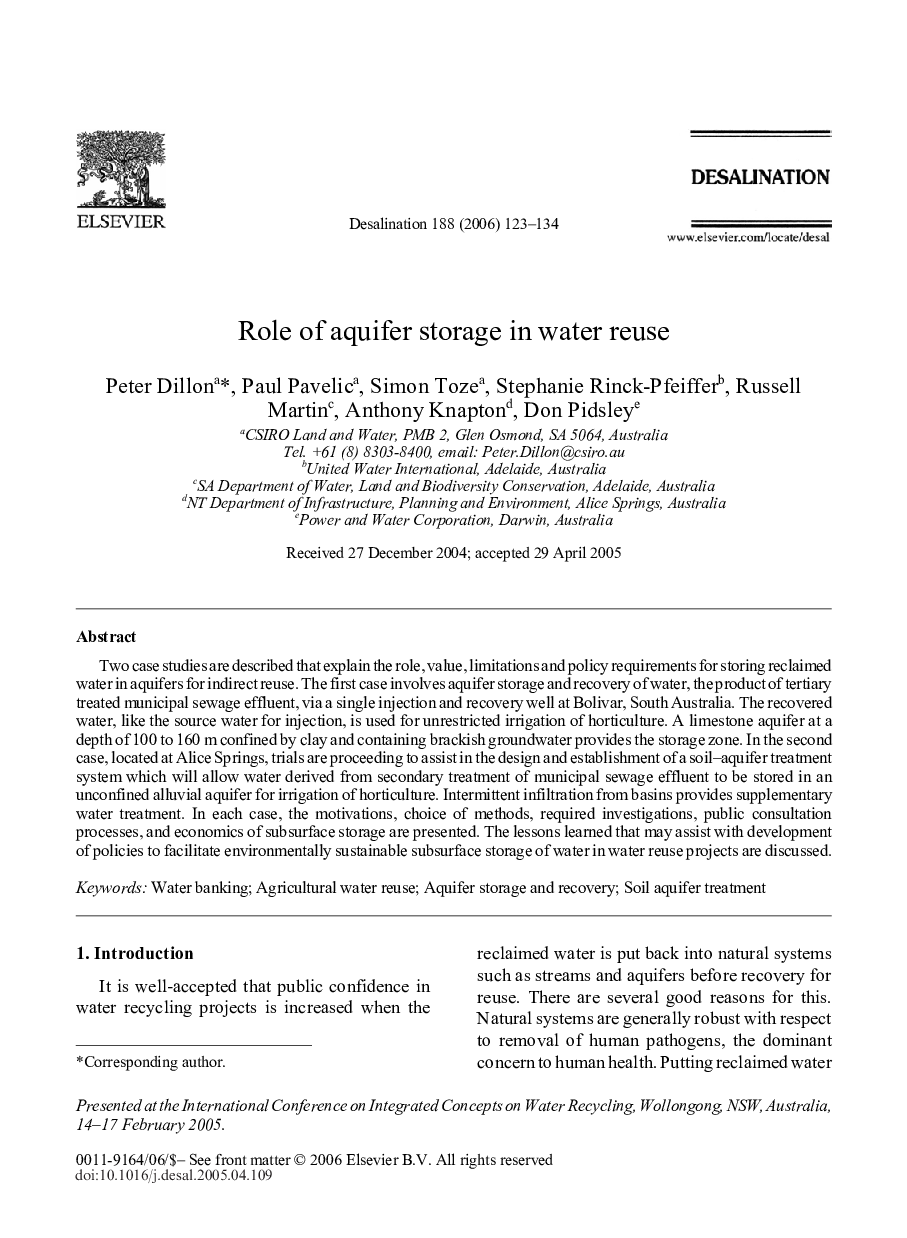| Article ID | Journal | Published Year | Pages | File Type |
|---|---|---|---|---|
| 629191 | Desalination | 2006 | 12 Pages |
Two case studies are described that explain the role, value, limitations and policy requirements for storing reclaimed water in aquifers for indirect reuse. The first case involves aquifer storage and recovery of water, the product of tertiary treated municipal sewage effluent, via a single injection and recovery well at Bolivar, South Australia. The recovered water, like the source water for injection, is used for unrestricted irrigation of horticulture. A limestone aquifer at a depth of 100 to 160 m confined by clay and containing brackish groundwater provides the storage zone. In the second case, located at Alice Springs, trials are proceeding to assist in the design and establishment of a soil–aquifer treatment system which will allow water derived from secondary treatment of municipal sewage effluent to be stored in an unconfined alluvial aquifer for irrigation of horticulture. Intermittent infiltration from basins provides supplementary water treatment. In each case, the motivations, choice of methods, required investigations, public consultation processes, and economics of subsurface storage are presented. The lessons learned that may assist with development of policies to facilitate environmentally sustainable subsurface storage of water in water reuse projects are discussed.
